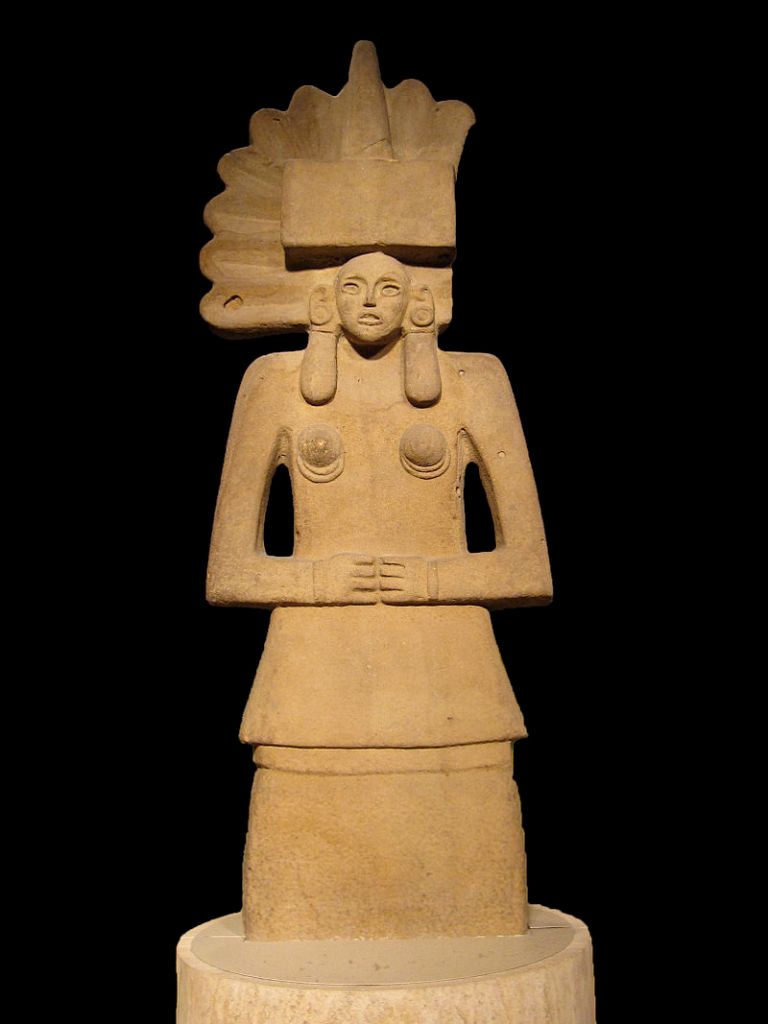Tlali Long Cave – Toci, Aztec “mother of the gods” and Chicomoztoc, the seven long caves in the Nahuatl creation myths.
https://www.wizard101central.com/wiki/NPC:Tlali_Long_Cave
https://en.wikipedia.org/wiki/Toci
https://en.wikipedia.org/wiki/Chicomoztoc
Tlali Long Cave is the Chief of the Gold Frill Spike Horn Tribe in Tierra de Brea and the estranged brother of Chalchiu Green Skirt. When their father died he left no Last Will and Codex. Tlali took the gold min his sister wanted and Chalchuiu took the Greenstone River Bank that he wanted. They have been bickering ever since.
Toci (Classical Nahuatl: tocih, “our grandmother”) is a deity figuring prominently in the religion and mythology of the pre-Columbian Aztec civilization of Mesoamerica. In Aztec mythology, she is seen as an aspect of the mother goddess Coatlicue or Xochitlicue and is thus labeled “mother of the gods” (Classical Nahuatl: tēteoh īnnān). She is also called Tlalli Iyollo (Classical Nahuatl: tlālli īyōlloh, “heart of the earth”).
Chicomoztoc is the name for the mythical origin place of the Aztec Mexicas, Tepanecs, Acolhuas, and other Nahuatl-speaking peoples (or Nahuas) of the central Mexico region of Mesoamerica, in the Postclassic period. The seven long caves at the “Heart of the Earth” figure prominently in the Nahuatl creation myths.
Chicomoztoc — the place of the seven caves. The mythical origin of the “nahuatlaca” tribes. From the “Historia Tolteca chicimeca”. A postcortesian codex from 1550, written by the people of Cuauhtinchan (of Chichimeca ancestry) to sustain their right to their lands, under the Spanish Colonial authorities. They wrote their history from A.D. 116 through 1544, using a mixture of European and prehispanic styles.
The term Chicomoztoc derives from Nahuatl chicome (“seven”), oztotl (“cave”), and -c (“place”). In symbolic terms these caves within a hill have been compared to the wombs from which the various peoples were born; another possible association is with the seven orifices of the human body. In either case, this term is associated with the origin, birth, or beginning of a group of people, both mythic and historical.

There is an association of Chicomoztoc with certain legendary traditions concerning Culhuacan (Colhuacan), an actual pre-Columbian settlement in the Valley of Mexico which was considered to have been one of the earliest and most pre-eminent settlements in the valley. Culhuacan (“place of those with ancestors” is its literal meaning in Classical Nahuatl) was viewed as a prestigious and revered place by the Aztec/Mexica (who also styled themselves ‘Culhua-Mexica’). In Aztec codical writing, the symbol or glyph representing the toponym of Culhuacan took the form of a ‘bent’ or ‘curved’ hill (a play on the homonym col- in Nahuatl, meaning “bent, twisted”, e.g. as if by old age).
Some researchers have attempted to identify Chicomoztoc with a specific geographic location, likely between 60 and 180 miles northeast of the Valley of Mexico including perhaps a height near the present-day town of San Isidro Culhuacan.
The current list of all the (known) Azteca references are located here.
Although I am well versed in Pop Culture references, I do not claim to have caught them all. Let me know your favorites in the comments and if I’ve missed one you caught, let me know so I can add it to the list.
Text for this article is excerpted from the linked wiki pages.
Tlali Long Cave image is from Wizard101, and is copyright of KingsIsle Entertainment.
Toci statue image is borrowed from Wikipedia and is copyright by the British Museum. It is shared under the Creative Commons License CC BY-SA 3.0
The seven caves of Chicomoztoc image is borrowed from Wikipedia and is in the public domain.
Image usage qualifies as fair use under US copyright law.

